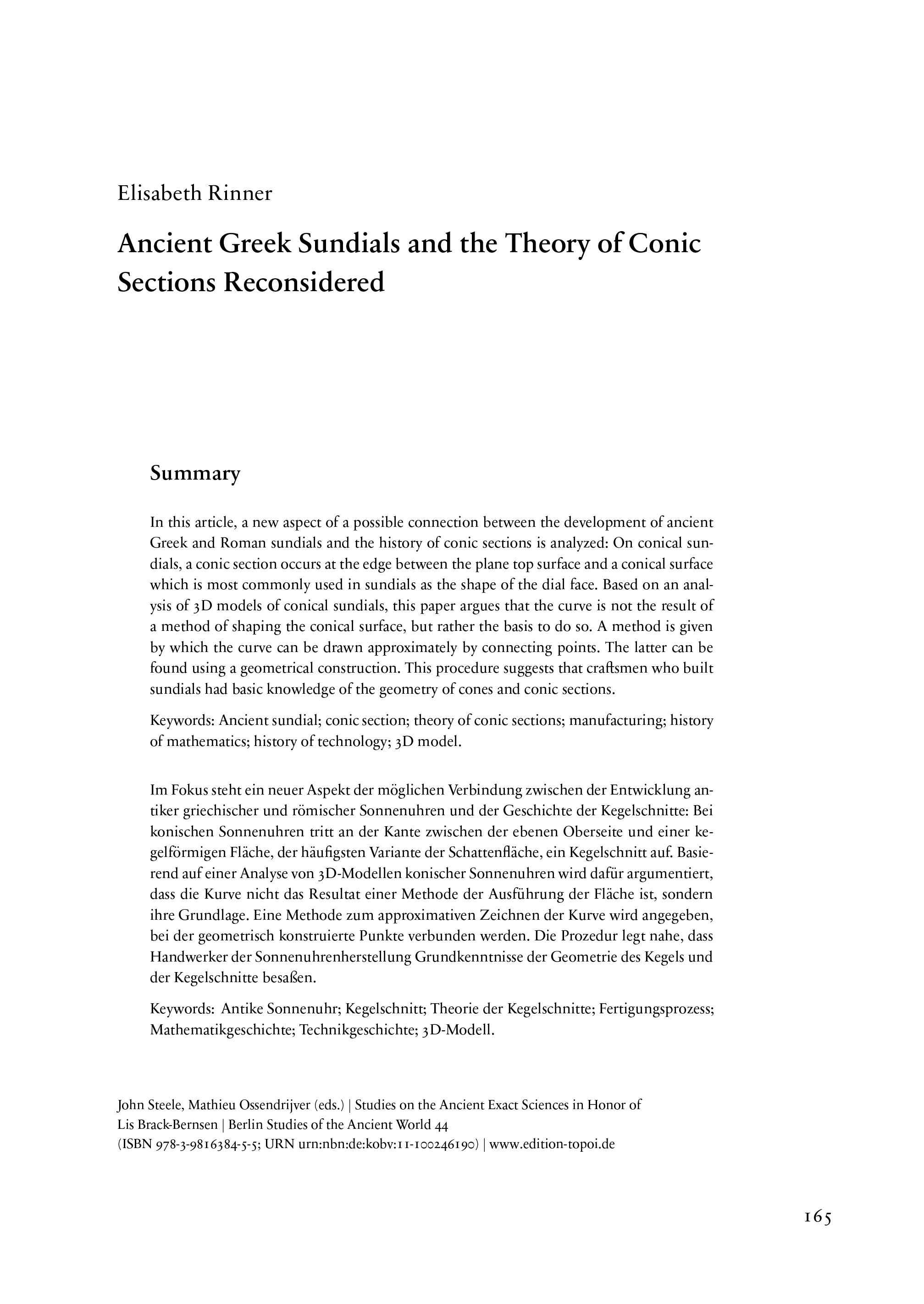Ancient Greek Sundials and the Theory of Conic Sections Reconsidered
In this article, a new aspect of a possible connection between the development of ancient
Greek and Roman sundials and the history of conic sections is analyzed: On conical sundials,
a conic section occurs at the edge between the plane top surface and a conical surface
which is most commonly used in sundials as the shape of the dial face. Based on an analysis
of 3D models of conical sundials, this paper argues that the curve is not the result of
a method of shaping the conical surface, but rather the basis to do so. A method is given
by which the curve can be drawn approximately by connecting points. The latter can be
found using a geometrical construction. This procedure suggests that craftsmen who built
sundials had basic knowledge of the geometry of cones and conic sections.
Im Fokus steht ein neuer Aspekt der möglichen Verbindung zwischen der Entwicklung antiker
griechischer und römischer Sonnenuhren und der Geschichte der Kegelschnitte: Bei
konischen Sonnenuhren tritt an der Kante zwischen der ebenen Oberseite und einer kegelförmigen Fläche, der häufigsten Variante der Schattenfläche, ein Kegelschnitt auf. Basierend auf einer Analyse von 3D-Modellen konischer Sonnenuhren wird dafür argumentiert, dass die Kurve nicht das Resultat einer Methode der Ausführung der Fläche ist, sondern ihre Grundlage. Eine Methode zum approximativen Zeichnen der Kurve wird angegeben, bei der geometrisch konstruierte Punkte verbunden werden. Die Prozedur legt nahe, dass Handwerker der Sonnenuhrenherstellung Grundkenntnisse der Geometrie des Kegels und der Kegelschnitte besaßen.

